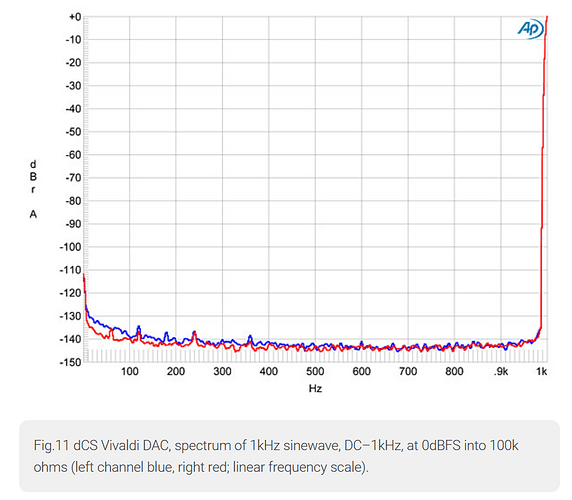Hi. I’ve seen dBu and dBm, but dCS uses “dB0”. What does this mean? Is it the same as dBFS?
Ok, so if I did the math right, -113dB0 residual noise @ 6Vrms FS (+18dBu) represents a broadband self-noise of -95dBu or 14uV?
I think dB0 is the same as 0dBFS.
The given residual noise of -113dB0 is coming from the dCS Vivaldi. In the following article you can see that this -113 is at the lowest frequencies:
The very low noise floor with 24-bit data can be seen in fig.11, with all power-supply–related spuriae at or below –135dB and the random noise components mainly stemming from the analyzer’s A/D converter. Astonishing!
From:
https://www.stereophile.com/content/dcs-vivaldi-digital-playback-system-measurements
Thanks. I assume that the -113dBFS (-113dB0) number is a sum of all broadband noise components (e.g., 20Hz - 20kHz), not just worst-case at some low-frequency. We may see -140dBr at some frequencies, but when all the noise (20-20k) is summed, it’s likely -113dBr, or -95dBu. That’s my take. BTW, this review graph is 10 years old. Today’s state of the art broadband DAC noise is somewhere around -115dBu, or around -135dBr, unweighted.
Indeed, it is from the now 12 years old Vivaldi DAC. The just newly launched Varèse is measuring considerably better at -118dB0.
Let us call in on dCS @James to see if they can comment.
